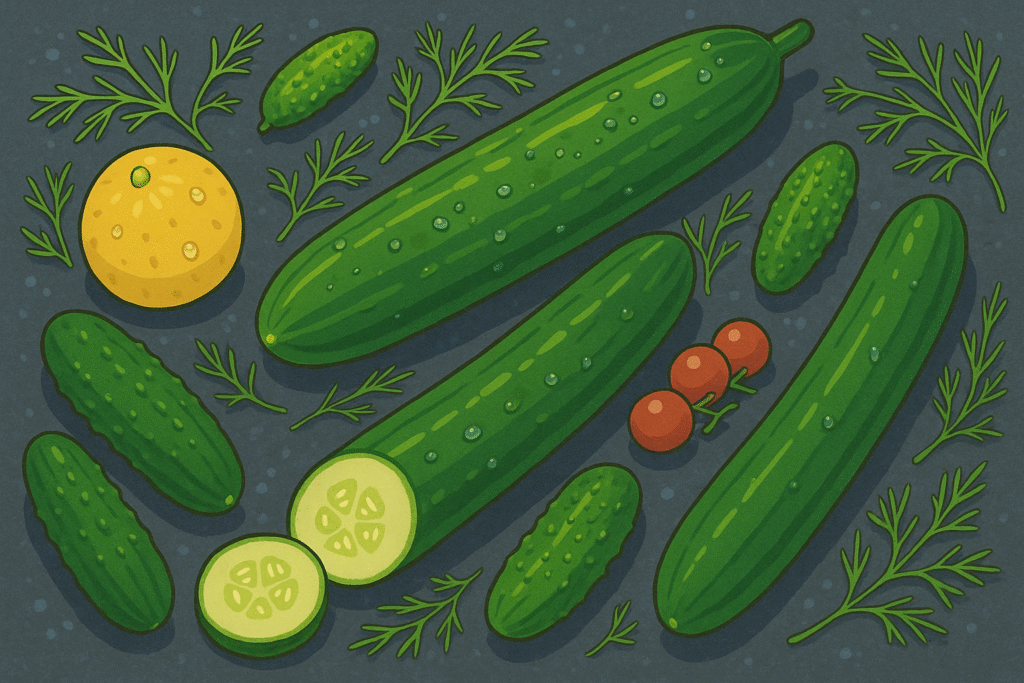Cucumber (Cucumis sativus)

About Cucumber
Cool, crisp, and endlessly hydrating — cucumbers are the edible definition of freshness. Technically a fruit, cucumbers are used like vegetables in dishes worldwide: salads, raita, tzatziki, pickles, sandwiches, and even cocktails.
They’re not just background crunch. Cucumber varieties differ in bitterness, water content, and even aroma — and each culture has its own spin on how to use them.
The History of Cucumber
Cucumbers likely originated in South Asia, with domesticated forms appearing in India over 3,000 years ago. From there, they spread westward via trade and conquest, showing up in ancient Egyptian tombs, Roman feasts, and later, in colonial kitchens across Europe and the Americas.
In India, cucumber was considered cooling and sattvic — linked to purity and balance. In ancient Rome, Emperor Tiberius reportedly demanded cucumbers daily, grown in carts that were moved to follow the sun.
Pickling also has deep roots — both in Eastern Europe and East Asia, where preservation turned cucumbers into tangy condiments central to local diets
The Science of Cucumber
Cucumbers are about 96% water, which makes them cooling and hydrating — but also fragile and quick to spoil. The crunch is thanks to turgid cells under pressure, especially in fresh-picked varieties.
Bitterness in some cucumbers comes from cucurbitacins, compounds that evolved to discourage herbivores. These are more common in wild or heirloom varieties, and are typically bred out in commercial ones.
The Geography of Cucumber
Today, cucumbers are grown almost everywhere, from greenhouses in the Netherlands to terraces in Nepal. China produces more cucumbers than the rest of the world combined, while Japan and the Middle East cultivate their own prized regional strains.
Climate affects everything: cool-climate cucumbers tend to be milder and crisper; hot-climate varieties often have tougher skins and stronger flavor.
Varieties of Cucumber
English (Hothouse)
Long, seedless, thin-skinned — perfect for fresh eating.
Persian
Shorter, crunchier, and slightly sweet.
Lemon
Round and yellow — with a mild, almost melon-like flavor.
Kirby
Bumpy, crisp — ideal for pickling.
Armenian
Technically a muskmelon, but eaten as cucumber with a ridged, serpentine shape.
FAQs All your questions about Cucumber: answered
Is cucumber a fruit or a vegetable?
Botanically, it’s a fruit. But in cooking, it’s used like a vegetable.
Why do cucumbers get bitter?
Cucurbitacins cause bitterness — more common in stressed plants or older varieties.
Can you pickle any cucumber?
Technically yes, but varieties like Kirby are bred to hold texture better during pickling.
Should you peel cucumbers?
Depends on the type — Persian and English types are fine with skin; others can be bitter.